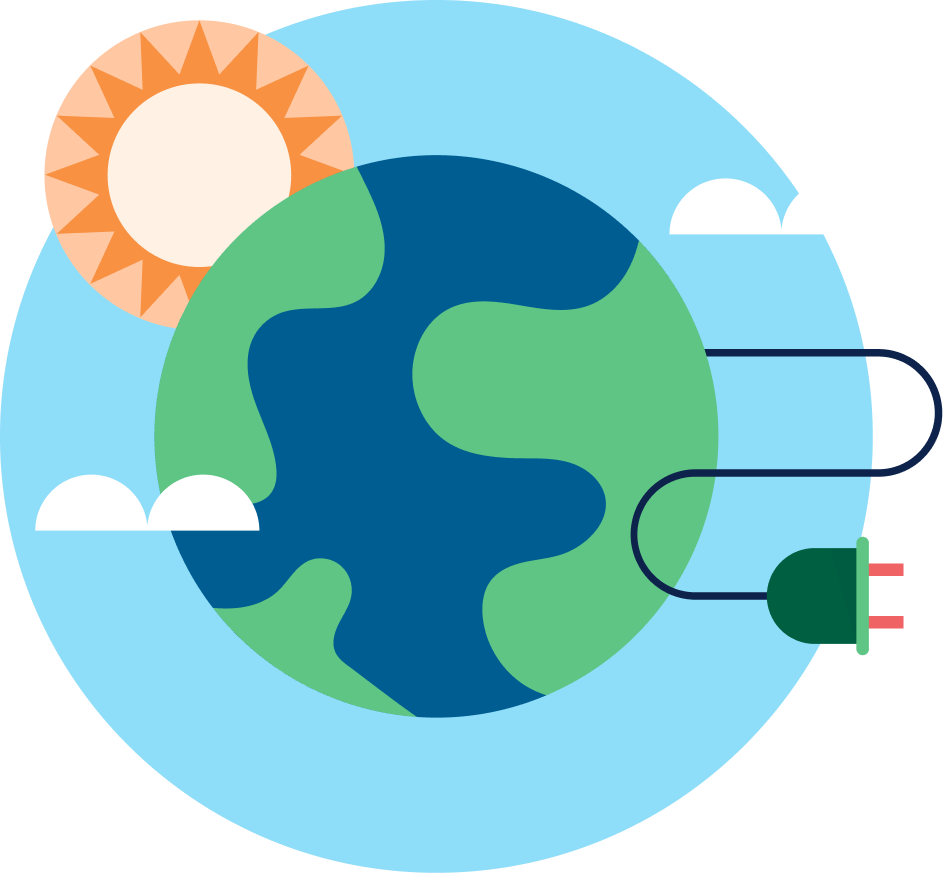We manifest climate leadership
The global climate crisis is the single biggest challenge facing humanity. And since it is caused by us humans, we are also in the position to solve it. PostNord recognizes the scale of the challenge, and we are committed to take the lead in paving the way for a climate transition of the transport and logistics sector.

The carbon emissions from the transportations sector accounts for 16 percent of global emissions. 12 percent comes from road transport where passenger transport accounts for 60 percent and road freight 40 percent (source).
Green by PostNord
PostNord's commitment is to show that it is possible to achieve completely fossil-free transport and operations already by 2030. Our transition roadmap that we have named ‘Green by PostNord’ will be in line with the Paris Agreement, and we have sent in our plan with specific targets to be approved by the Science Based Targets initiative.
On the way toward fossil free operations and transports in 2030 we have established a half-way target of reducing our total carbon footprint by 40 percent in 2025 compared to 2020.
Another important target is to achieve emission-free last mile transports no later than 2027. This is where electrification of our fleet is essential.
These new targets are based on a history of achievements. Our past target of reducing our emissions by 40 percent in 2020 compared to 2009 was reached on time and now we raise the bar, not only for PostNord but also for our colleagues in the industry.
Progress requires partnerships with customers and other market participants, both within and outside the transport sector. One precondition is how quickly the energy sector can transition to renewable energy production. Other success factors include the pace in the development of electric vehicles, the expansion rate of EV charging infrastructure and the growth rate in the production capacity of biofuels. This is the reason why PostNord, as the first logistics provider, joined the Pathways Coalition, which is a partnership of several industry leading companies in the transport value chain committed to accelerating the work to decarbonize heavy transport. Read press release for more information.
Reducing the climate impact is not only a positive contribution to society – it is also a competitive advantage for PostNord and our customers.
We set our climate targets based on science
PostNord has been working to reduce carbon emissions for many years. Our most recent targets were for the years 2010–2020 and 2006–2010.
While those targets were based on science at the time, there was a clear need to set new and higher targets for the decade ahead. And as with the previous targets, we wanted these to be approved by the Science Based Targets initiative.
The Science Based Targets initiative (SBTi) is a collaboration between the United Nations Global Compact, CDP, World Resources Institute and the World Wide Fund for Nature. The SBTi defines and promotes best practice in science-based target setting and independently assesses companies’ targets.
Our new targets are to be achieved by 2030. As the Science Based Targets initiative has evolved with what the scientific community is telling us, there is no longer an option to aim at anything else than to set a target that will be in line with the goal of 1,5 degrees as stated in the Paris Agreement. PostNord’s climate transition plan and targets have been evaluated and approved by the Science Based Targets initiative. By focusing on emissions reductions in areas where we have both the greatest impact and the greatest opportunity to exert an influence i.e. our own and purchased road transport, we ensure that PostNord’s emissions reductions are in line with the requirements of the Paris Agreement.
PostNord Group commits to reduce absolute scope 1 and 2 emissions with 80 percent by 2030 from a 2020 base year. PostNord Group also commits to reduce scope 3 emissions by 50 percent per parcel within the same timeframe. The target boundary includes biogenic emissions and removals from bioenergy feedstocks.
To reach these targets and to contribute to the climate transition, not only PostNord, but the entire transport sector needs to undergo a huge transformation. With our Green by PostNord initiative, PostNord wants to take the lead in this regard and show that it is possible to switch to fossil-free transport by 2030. This ambition covers the more than 13,000 vehicles that we and our partners drive on the Nordic roads, and by 2027 all PostNord’s last-mile transports shall be emission-free throughout the Nordic region.
PostNord is engaged in major electrification of its vehicle fleet. All countries are gradually phasing in electric vehicles according to local production needs. Technology is developing rapidly and PostNord has good relationships and close contacts with vehicle suppliers. Biofuels are an important part of the transition to a fossil-free PostNord by 2030. We aim to continually increase the share of renewable fuels for vehicles that previously ran on diesel. We avoid palm oil and residual products from palm oil. The predominant fuel is HVO100, which can be used in existing diesel vehicles. Other renewable fuels, of which the main option is biogas, require modification or dedicated vehicles.
During the whole of 2022, we will report our climate data in the same format as we have done in the past. From the Annual and Sustainability Report of 2022, we will explain some of the key factors that have enlarged the scope of what emissions are included. One example is road transportation that make up more than 90 percent of total emissions. Previously, we have reported only on emissions in the use phase, known as Tank-to-Wheel. From 2022 onwards, fleet emissions will include all greenhouse gases and will be reported using Well-to-Wheel figures instead, to provide a more accurate indication of our total carbon footprint.



